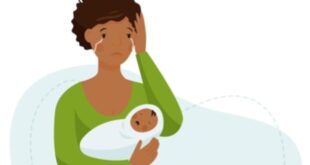DEFINITIONS OF DEPRESSION
Klerman and Weissman have described the variety of definitions of depression and its symptoms. A diagnosis of clinical depression depends on the pattern of symptoms and on their
severity and duration.
One way of classifying the symptoms of unipolar depression is into a syndrome of four dimensions. The cognitive dimension includes hopeless, helpless beliefs—the conviction that nothing will ever get better.
The irony of depression is that the person feels that nothing can help, whereas, in fact, depression can be quite effectively treated. The motivational behavioral dimension includes feeling apathetic, lacking in energy, not wanting to do anything, and actually doing less than usual. Depression often interferes with normal activities. It especially disrupts interpersonal relationships.
The affective dimension includes feeling sad, blue, depressed, and taking no pleasure in the things that were formerly enjoyed. Depressed persons also often feel irritable and anxious, even quite openly angry and hostile, especially with the people closest to them (Weissman & Paykel, 1974).
The trouble is that the anger is not used to communicate and to solve problems, but simply to express distress. It may be that the depressed person’s low selfesteem and anger toward self comes from an awareness of his or her inadequate coping rather than from some mysterious turning of anger inward.
The so-called “vegetative” dimension includes disturbances of appetite and sleep. Most commonly, depressed people have insomnia and do not feel like eating, but some sleep much more than usual, and overeat. These symptoms usually appear only in fairly severe depression (McLean, 1976).
There are many ways of measuring depression. In the data reported here, degree of depression
will be operationally defined as the score on a depression scale, the Center for Epidemiologic
Studies Depression Scale.
The score consists of the number of symptoms of depression experienced during the past week, weighted by the frequency and duration of each symptom. A higher score indicates a higher level of depression.
The scale includes many of the symptoms listed by Klerman and Weissman as characteristic of depression (for more information about the CES-D Scale, see Radloff 1977: and Weissman, Sholomskas,
Pottenger, Prusoff, & Locke, 1977).
 Therapy for anxiety Therapy for anxiety
Therapy for anxiety Therapy for anxiety



